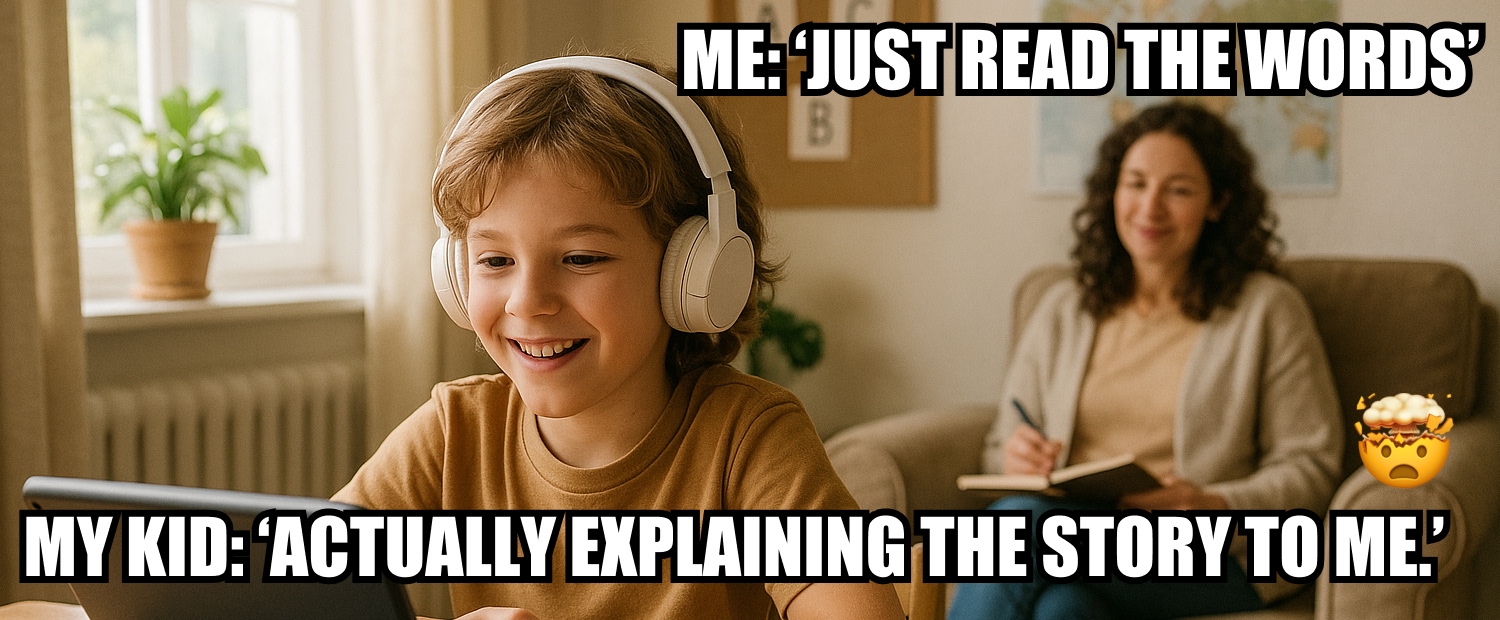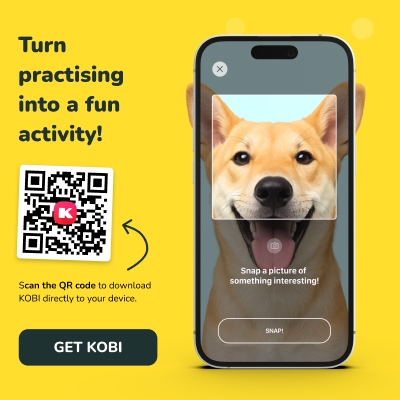Summary: What You’ll Learn in This Article

- Why reading together should go beyond decoding
- What the Science of Reading says about comprehension and discussion
- How KOBI tools spark deeper conversations while keeping reading fun
- Simple ways parents can connect with their child through stories
- Reflection prompts to turn reading into meaningful dialogue
Reading Together Isn’t Just About the Words
Have you ever finished reading with your child and realized they barely remembered the story?
That’s because decoding is only half the picture. The real magic happens when kids talk about what they read – sharing thoughts, asking questions, and connecting stories to their own lives.
When that happens, reading transforms. It’s no longer just practice. It’s a conversation. And conversations build not only stronger readers, but stronger bonds between parent and child.

Why Connection Matters: Science Says So
Research in reading comprehension highlights that:
- Active discussion boosts memory – kids remember and internalize stories better when they talk about them.
- Questions spark critical thinking – asking “Why did the character do that?” deepens comprehension.
- Personal connections fuel motivation – when stories link to a child’s own life, engagement skyrockets.
The Science of Reading reminds us: fluency and decoding matter, but true comprehension comes alive when children can reflect, question, and connect meaning to their own world.

How KOBI Helps Turn Reading Into Conversation
Step 1: Start With Snap-a-Story
A story created from your child’s own photo instantly gives them something to talk about. Reading feels personal, not like homework.
Step 2: Listen Together, Then Pause
If you’re reading in English, use “Listen & Read” first so your child hears fluent reading. In other languages, start with “Read Aloud” together. Pause often to ask open-ended questions like: “What do you think will happen next?”
Step 3: Make Meaning With Pictionary
When tricky words pop up, tapping for images and kid-friendly definitions turns confusion into curiosity: “Have you ever seen one of these?”
Step 4: Reflect With ThinkTalk
KOBI’s guided comprehension prompts help parents spark meaningful discussions – without needing a script.
Step 5: Extend With WordVault
Words saved in WordVault become great conversation starters later: “Do you remember this word? Where else could we use it?”
Bonus: Multilingual Connections
With Snap-a-Story available in multiple languages, families can explore meaning and culture across tongues. And with more languages on the way, parents can even suggest which one they’d love to see next.
Tips for Parents: How to Build Connection Through Reading
- Ask open-ended questions, not yes/no ones: “Why do you think…?”
- Link stories to your child’s day: “That reminds me of what you built with Legos yesterday!”
- Let your child ask you questions – showing their ideas matter.
- Use emotions as a bridge: “How did that part make you feel?”
- Keep it playful: act out a scene, draw a picture, or retell the story together.
Why Homeschoolers Love KOBI for Connection
- Turns reading into shared experiences, not solitary tasks
- Provides ready-made prompts for deeper thinking
- Builds comprehension and confidence without worksheets
- Strengthens parent–child relationships through dialogue

Reading Is About Relationships, Not Just Results
When stories spark conversations, reading stops being a task – and starts being a bond.
KOBI makes that shift natural by giving families the tools to pause, reflect, and share meaning together.
Because the best readers don’t just say the words. They live them.
Key Takeaways
- Reading aloud is only step one – conversation makes comprehension stick
- Science of Reading highlights reflection and discussion as core to learning
- KOBI tools (Snap-a-Story, Pictionary, ThinkTalk, WordVault) make dialogue natural and fun
- Connection builds stronger readers and stronger relationships


